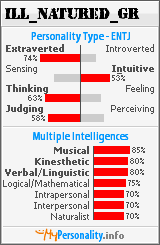Malware becoming more sophisticated, warns IBM
"Exploits as a service" industry continues to thrive
Computerworld UK staff (Computerworld UK) 18/09/2007 08:24:39
IBM has reported an increase in malware volume and sophistication as part of its security statistics report for the first half of the year.
So far this year, its X-Force research and development team has identified and analyzed more than 210,000 new malware samples, which is more than the total number of malware samples observed over the entirety of last year.
According to IBM, the "exploits as a service" industry continues to thrive, with the new practice of "exploit leasing" added to the repertoire of criminals. By leasing an exploit, attackers can now test exploitation techniques with a smaller initial investment, making this underground market an even more attractive option for malicious perpetrators.
According to the report, Trojans (seemingly legitimate files that are actually malware) are the most common form of malware this year, accounting for 28 percent of all malware. Last year, by contrast, Downloaders was the most common category -- a low-profile piece of malware that installs itself so that it can later download and install a more sophisticated malware agent.
"The X-Force security statistics report for 2006 predicted a continued rise in the sophistication of targeted, profit-motivated cyber attacks," said Kris Lamb, director of X-Force. "This directly correlates to the rise in popularity of Trojans that we are witnessing this year, as Trojans are often used by attackers to launch sustained, targeted attacks."
But running counter to historical trends, X-Force reports a slight decrease in the overall number of vulnerabilities uncovered in the first half of 2007 versus the first half of 2006. A total of 3,273 vulnerabilities were identified in the first half of this year, down 3.3 percent year-on-year. However, the percentage of high impact vulnerabilities has gone up since 2006 from 16 percent to 21 percent for the first half of 2007.
A similarly unexpected trend in the report is the decrease in spam message size. IBM said the fall corresponded with a decrease in image-based spam.
"The decrease in spam message size and image-based spam is a result of spammers adopting and experimenting with newer techniques, such as PDF- and Excel-based spam, as a means to more successfully evade detection by anti-spam technologies," said Lamb.
Source : computerworld.com.au
Wednesday, September 19, 2007
Malware becoming more sophisticated, warns IBM
Posted by ILL_Natured_gr at Wednesday, September 19, 2007
Labels: Internet, PC News, PC Security
Subscribe to:
Post Comments (Atom)























0 comments:
Post a Comment